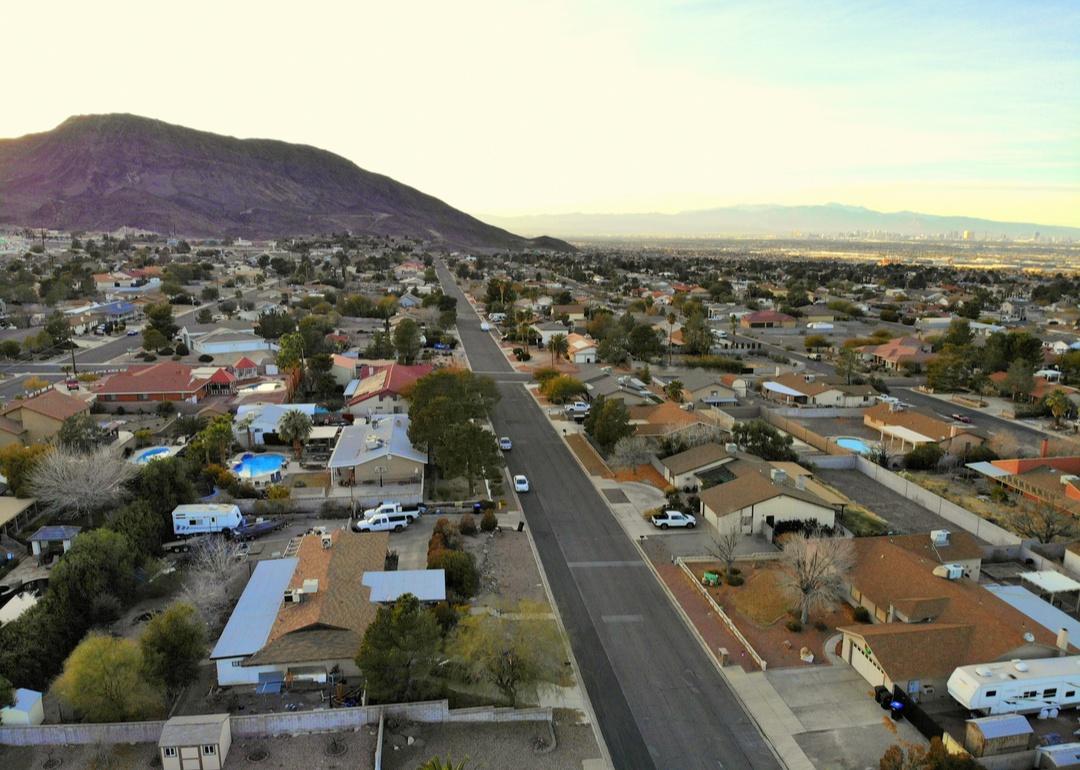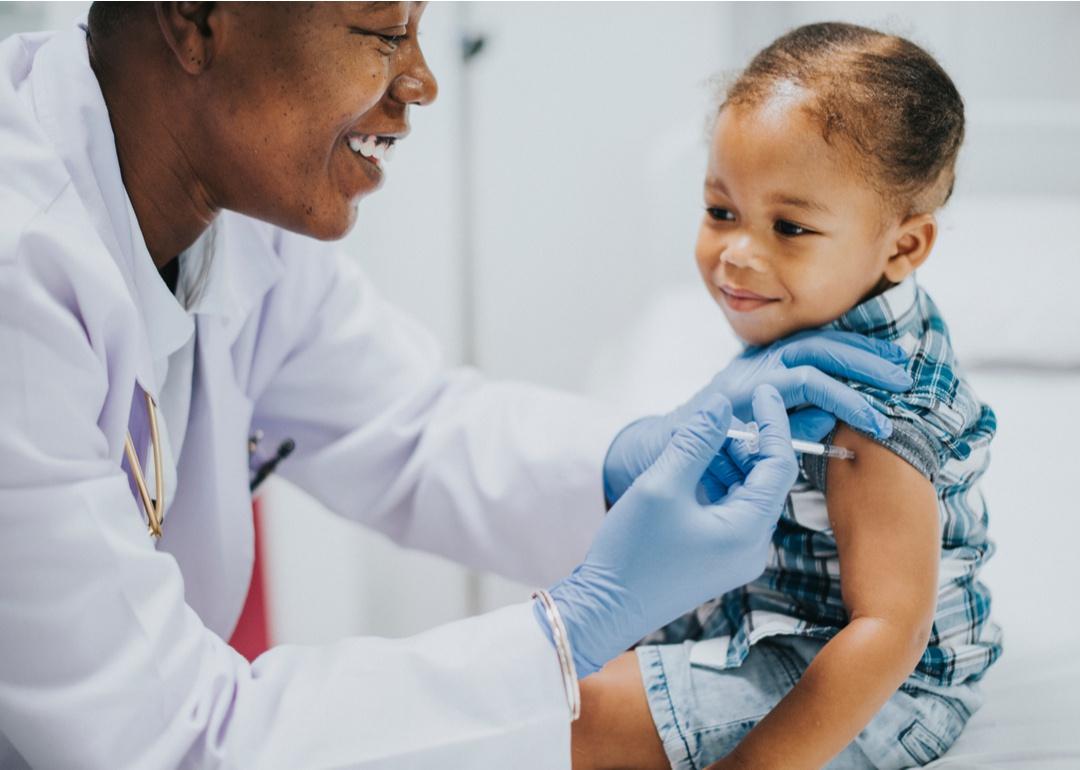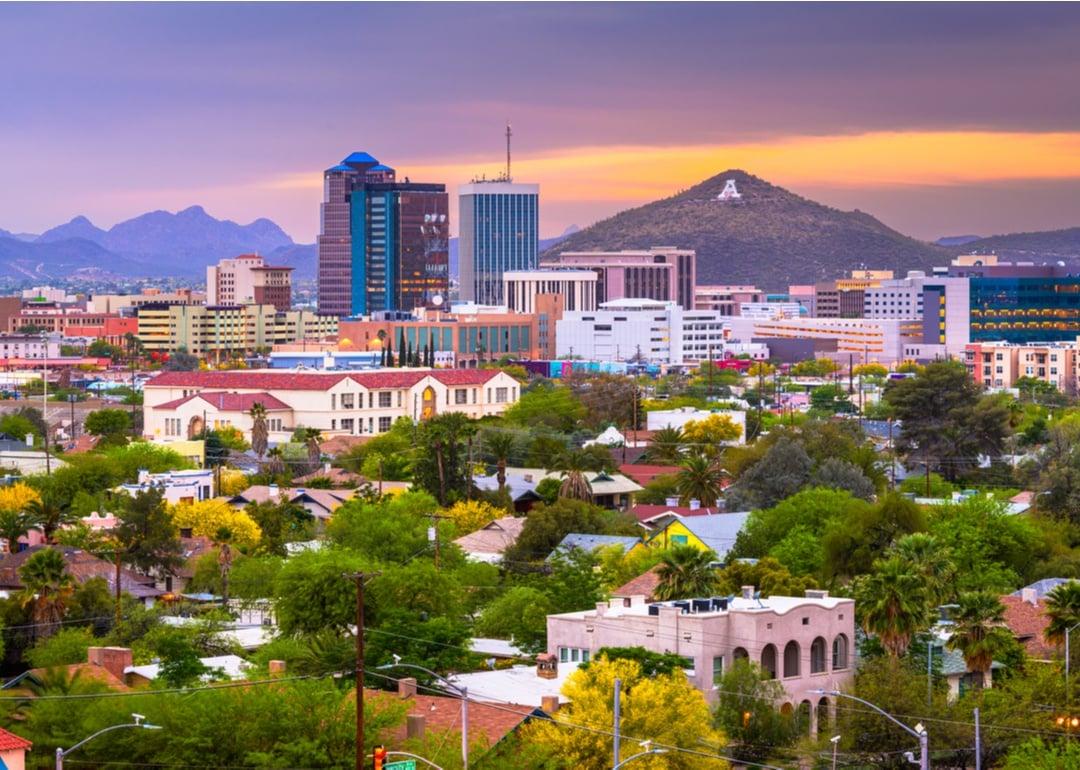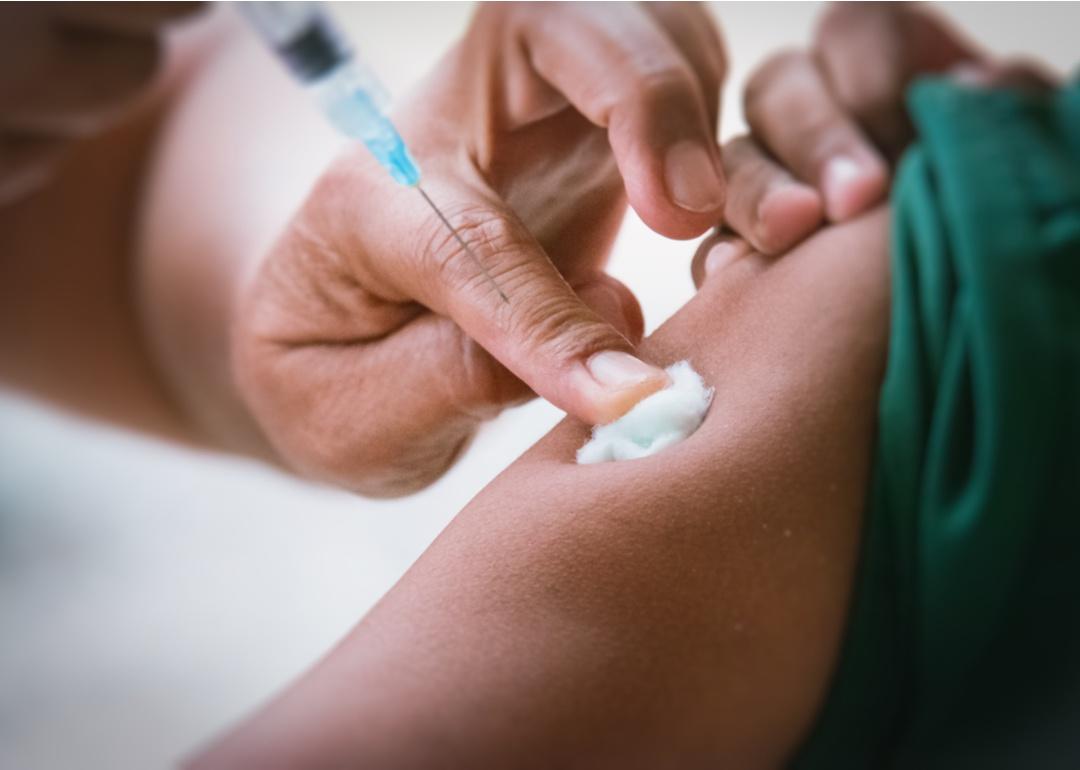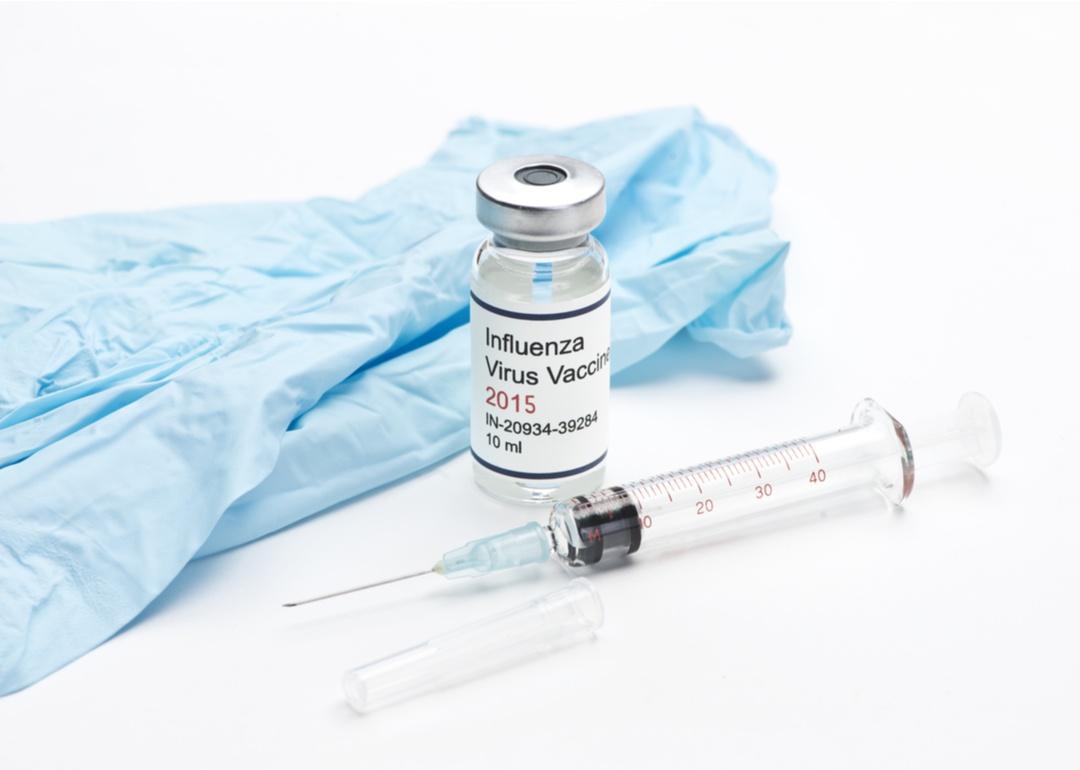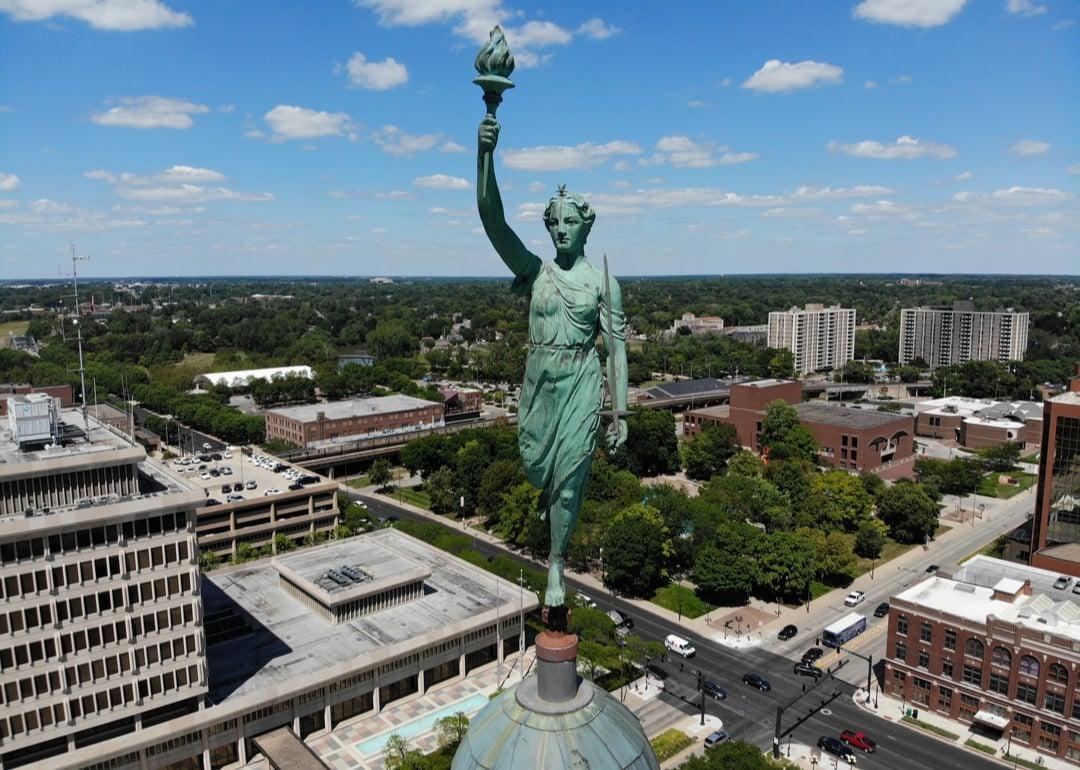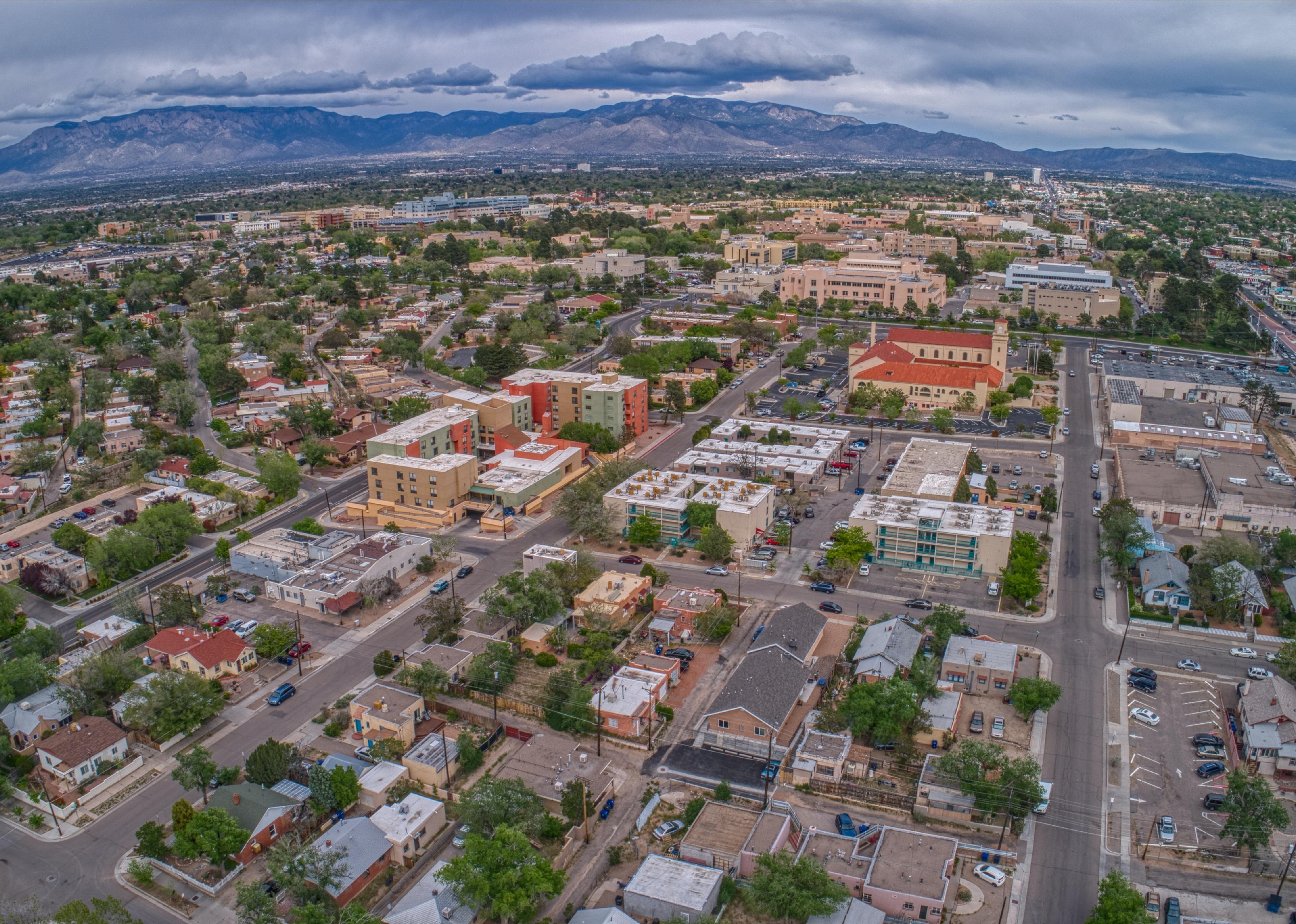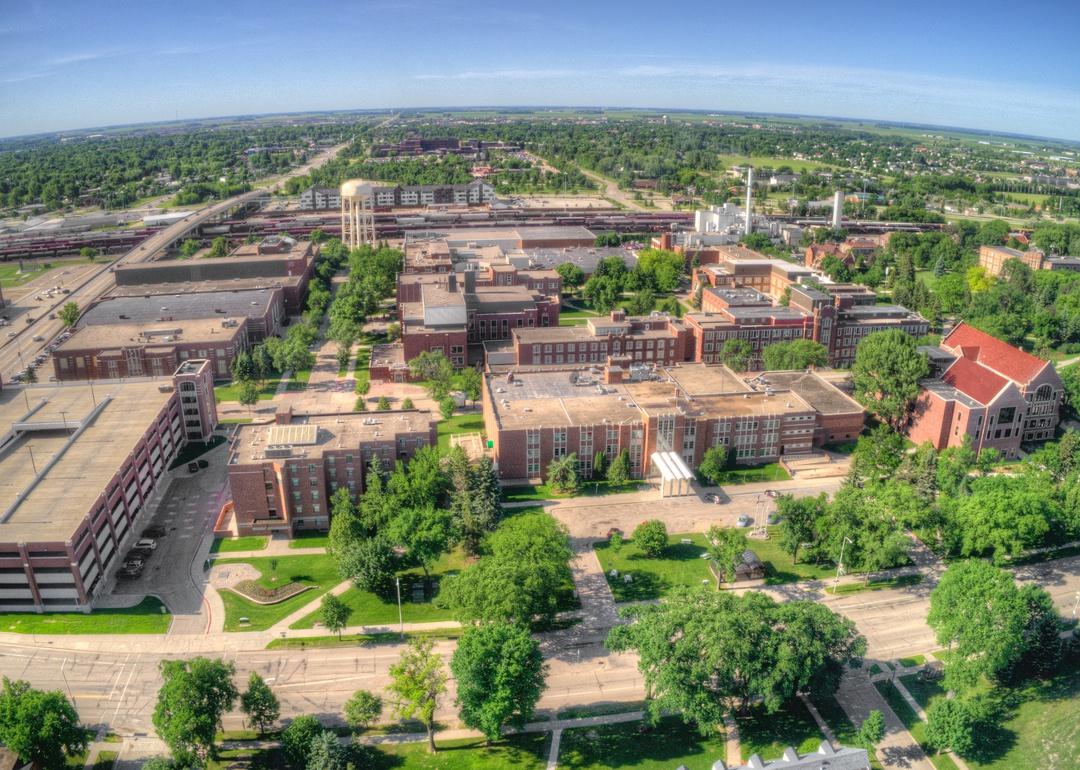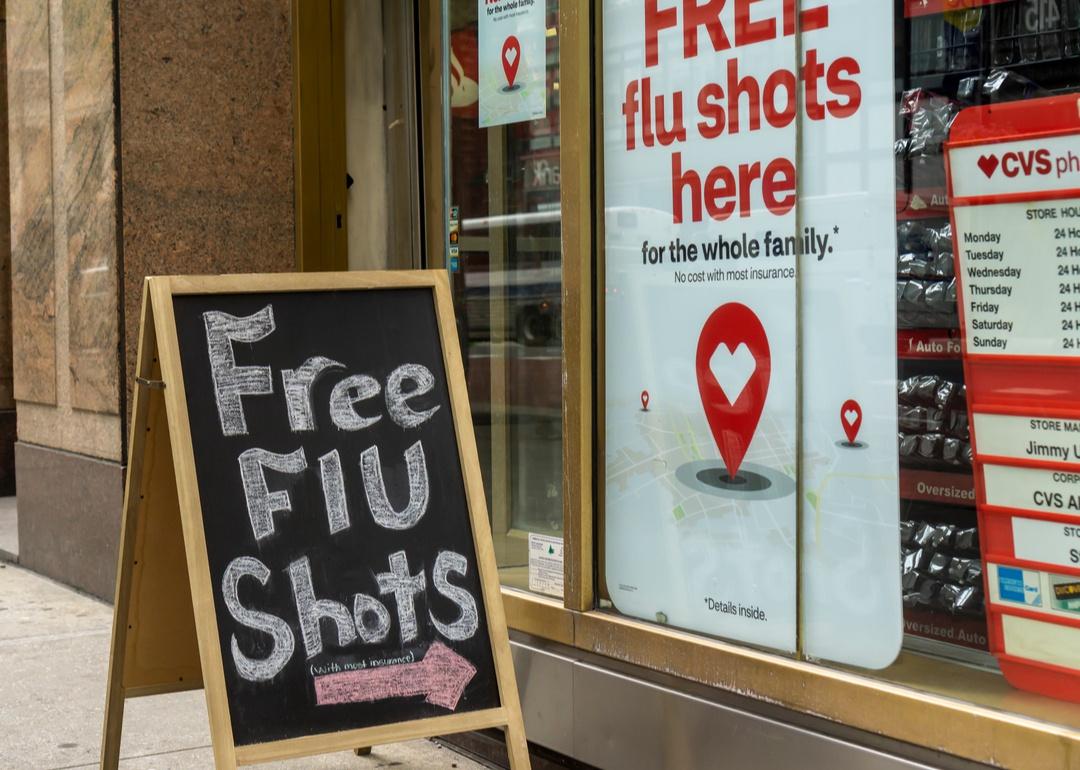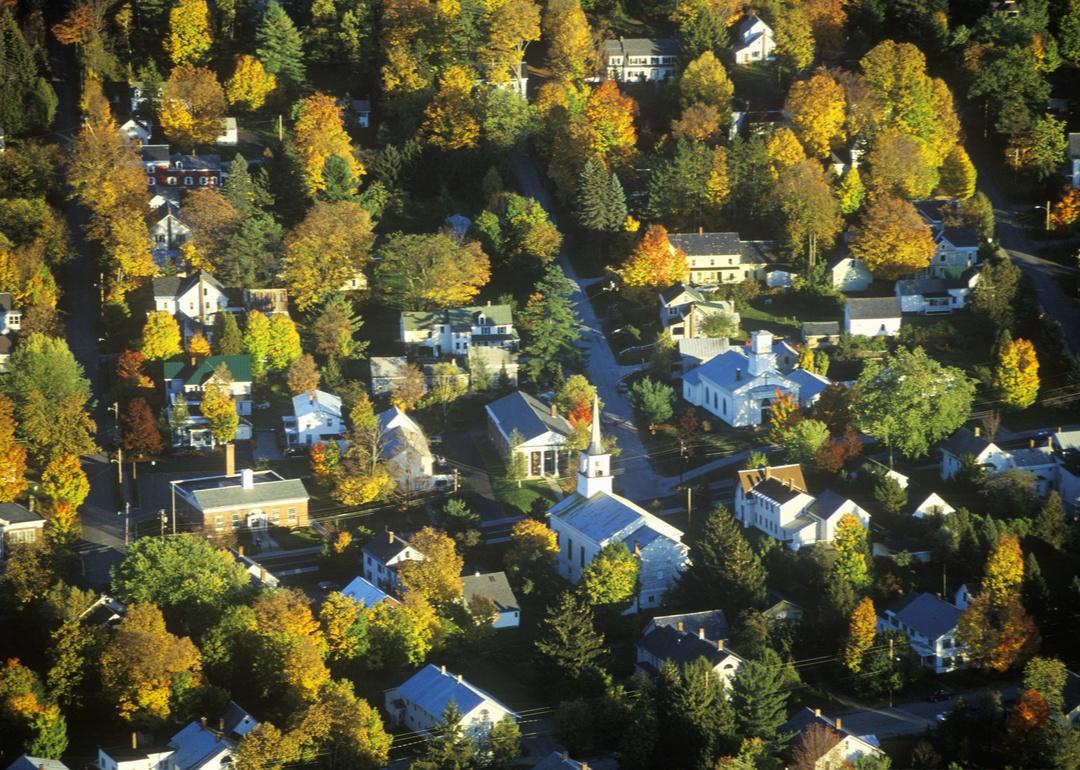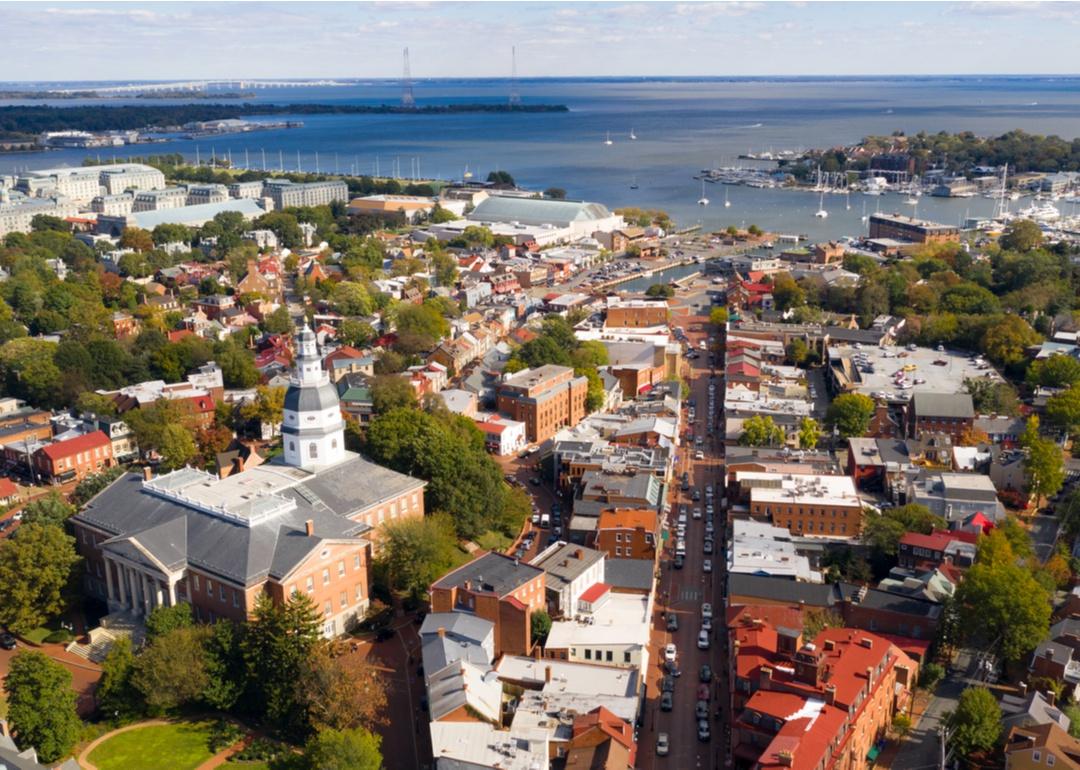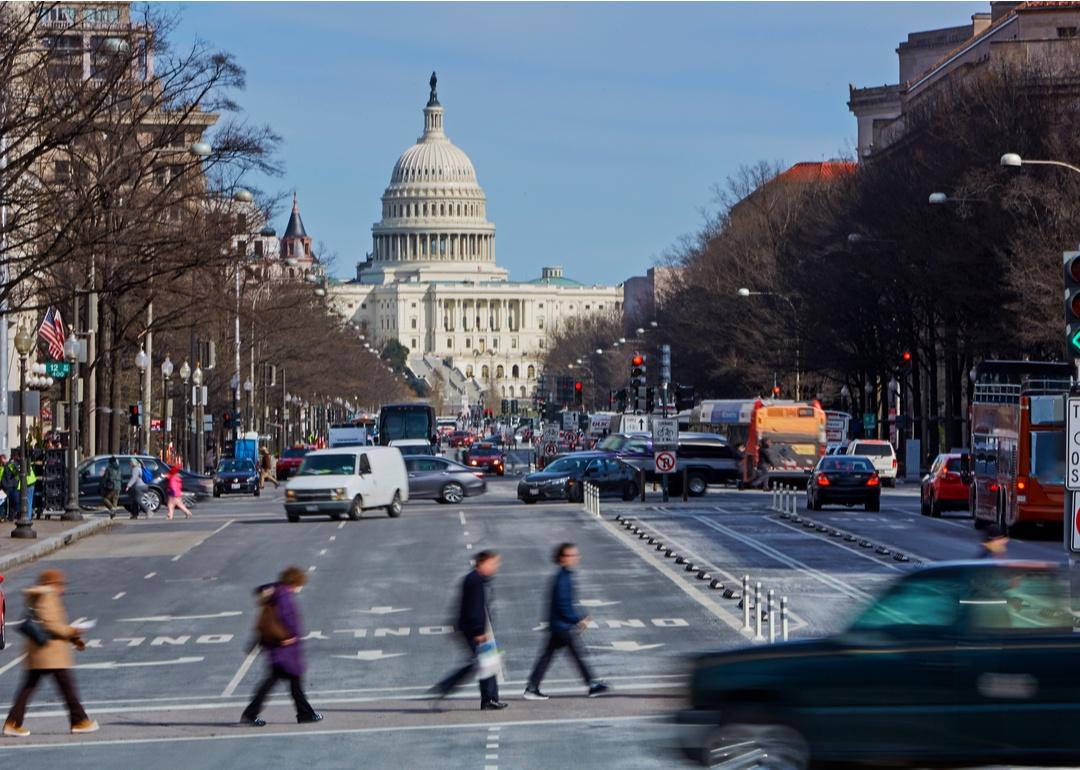States with the highest flu vaccination rates
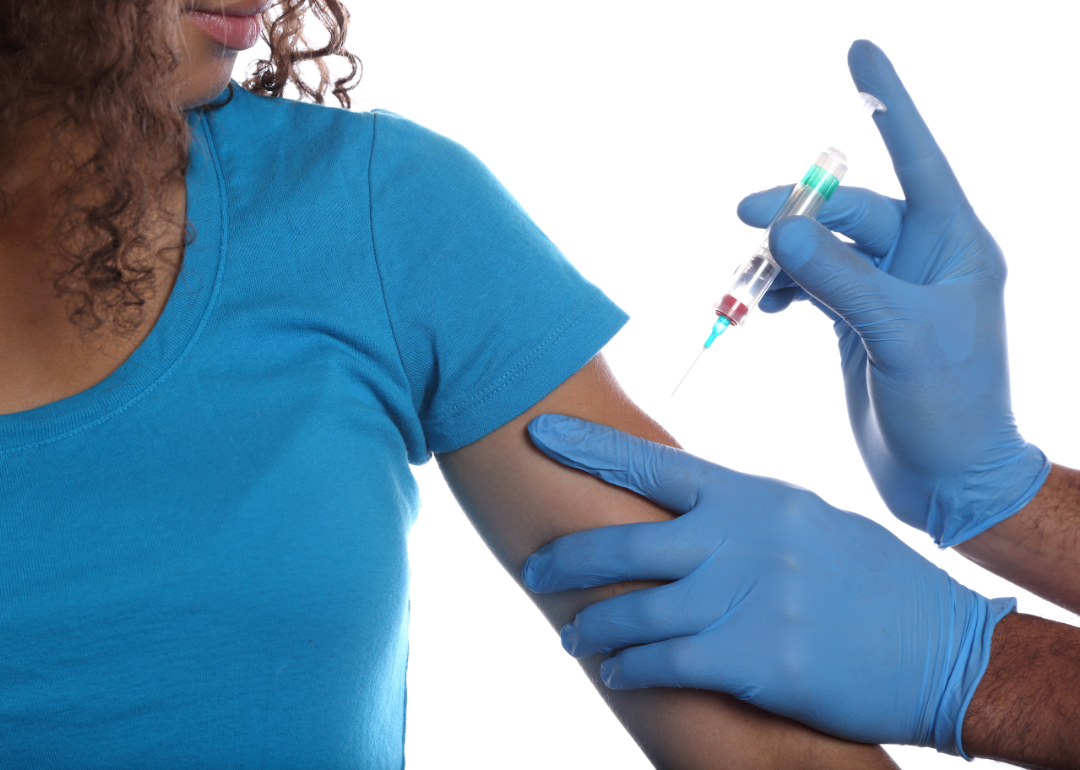
Canva
States with the highest flu vaccination rates
Your yearly flu vaccine protects you and those around you from the influenza virus, which could be deadly. Getting vaccinated too early could mean you may have reduced immunity by the time the flu virus circulates in your community. The Centers for Disease Control and Prevention recommends getting a flu vaccine in September or October to prepare for the flu season in the late fall and winter.
Flu vaccines are updated yearly to protect against the viruses in circulation for the upcoming flu season. Vaccines are readily available through places such as health departments, community clinics, and pharmacies. It takes about two weeks after vaccination to produce enough antibodies to the virus to fully protect you against the flu.
Rates of the flu have dropped dramatically in the last couple of years, mainly due to measures taken to reduce the spread of COVID-19: mask-wearing, social distancing, and reduced travel. However, experts warn of a potential resurgence of the flu in 2022 since many pandemic-related restrictions have dropped.
Most people over 6 months old can get a flu vaccine, including pregnant women and those with egg allergies. Flu vaccines are administered either as an intramuscular injection, usually in the upper arm, or as a nasal spray. Vaccines can protect against three strains of the flu virus (trivalent vaccines) or four strains of the virus (quadrivalent vaccines).
The most common side effects of the injectable flu vaccine are soreness at the injection site, muscle aches, and a fever. The side effects of the nasal spray vaccine are the same but may also include a runny nose.
People over 65 should get one of two vaccines: A high-dose quadrivalent vaccine, which contains four times the flu antigen of the standard vaccine (the flu antigen prompts the body’s immune response), or an adjuvanted vaccine, which encourages a more robust immune response. In the U.S., both vaccines are approved solely for those over 65.
According to the CDC, the flu vaccine is safe to administer at the same time as the COVID-19 vaccine or booster shot. While this may increase the likelihood of experiencing side effects like fatigue or muscle aches, some might opt to get both vaccines simultaneously for convenience.
To determine the peak seasonal flu vaccination rate for every state, Stacker consulted the CDC’s Influenza Seasons Vaccination Coverage Report. Data on flu vaccination coverage for children 6 months to 17 years is based on CDC’s National Immunization Survey-Flu, and coverage for adults is based on CDC survey data. States are ranked by their peak vaccination coverage for the most recent flu season, with most data collection finishing in May or June of 2022.
You may also like: States with the highest marriage rates—and how they’ve changed
![]()
Sean Pavone // Shutterstock
#51. Mississippi
– Peak flu vaccination coverage, 2021-2022 season: 38.2%
– 13.2% points lower than the national rate
Mark Winfrey // Shutterstock
#50. Wyoming
– Peak flu vaccination coverage, 2021-2022 season: 41.2%
– 10.2% points lower than the national rate
Khairil Azhar Junos // Shutterstock
#49. Nevada
– Peak flu vaccination coverage, 2021-2022 season: 42.0%
– 9.4% points lower than the national rate
Jacob L. // Shutterstock
#47. Idaho (tie)
– Peak flu vaccination coverage, 2021-2022 season: 42.3%
– 9.1% points lower than the national rate
Impact Photography // Shutterstock
#47. Florida (tie)
– Peak flu vaccination coverage, 2021-2022 season: 42.3%
– 9.1% points lower than the national rate
You may also like: What a Roe v. Wade reversal could mean for abortion access across America
Juice Flair // Shutterstock
#46. Oklahoma
– Peak flu vaccination coverage, 2021-2022 season: 42.9%
– 8.5% points lower than the national rate
Rawpixel.com // Shutterstock
#45. Louisiana
– Peak flu vaccination coverage, 2021-2022 season: 43.1%
– 8.3% points lower than the national rate
Sean Pavone // Shutterstock
#44. Arizona
– Peak flu vaccination coverage, 2021-2022 season: 44.1%
– 7.3% points lower than the national rate
Karin Hildebrand Lau // Shutterstock
#43. Montana
– Peak flu vaccination coverage, 2021-2022 season: 46.3%
– 5.1% points lower than the national rate
VILevi // Shutterstock
#42. Georgia
– Peak flu vaccination coverage, 2021-2022 season: 46.5%
– 4.9% points lower than the national rate
You may also like: 20 influential Indigenous Americans you might not know about
f11photo // Shutterstock
#41. Texas
– Peak flu vaccination coverage, 2021-2022 season: 46.6%
– 4.8% points lower than the national rate
Nolichuckyjake // Shutterstock
#40. Tennessee
– Peak flu vaccination coverage, 2021-2022 season: 47.0%
– 4.4% points lower than the national rate
PanyaStudio // Shutterstock
#39. Alabama
– Peak flu vaccination coverage, 2021-2022 season: 47.1%
– 4.3% points lower than the national rate
Robert Hoetink // Shutterstock
#37. West Virginia (tie)
– Peak flu vaccination coverage, 2021-2022 season: 47.8%
– 3.6% points lower than the national rate
Kevin Ruck // Shutterstock
#37. South Carolina (tie)
– Peak flu vaccination coverage, 2021-2022 season: 47.8%
– 3.6% points lower than the national rate
You may also like: Here’s how much legislation in each state restricts or protects trans youth
Matt Gush // Shutterstock
#36. California
– Peak flu vaccination coverage, 2021-2022 season: 48.1%
– 3.3% points lower than the national rate
f11photo // Shutterstock
#35. Kentucky
– Peak flu vaccination coverage, 2021-2022 season: 48.5%
– 2.9% points lower than the national rate
Ramunas Bruzas // Shutterstock
#34. Alaska
– Peak flu vaccination coverage, 2021-2022 season: 49.0%
– 2.4% points lower than the national rate
Pedro Gutierrez // Shutterstock
#33. Ohio
– Peak flu vaccination coverage, 2021-2022 season: 49.6%
– 1.8% points lower than the national rate
MedStockPhotos // Shutterstock
#31. Oregon (tie)
– Peak flu vaccination coverage, 2021-2022 season: 49.8%
– 1.6% points lower than the national rate
You may also like: Most pet-friendly cities in America
Jacob Boomsma // Shutterstock
#31. Arkansas (tie)
– Peak flu vaccination coverage, 2021-2022 season: 49.8%
– 1.6% points lower than the national rate
toodtuphoto // Shutterstock
#30. Missouri
– Peak flu vaccination coverage, 2021-2022 season: 49.9%
– 1.5% points lower than the national rate
stellamc // Shutterstock
#29. Utah
– Peak flu vaccination coverage, 2021-2022 season: 50.3%
– 1.1% points lower than the national rate
JDMcGauley // Shutterstock
#28. Indiana
– Peak flu vaccination coverage, 2021-2022 season: 50.4%
– 1.0% points lower than the national rate
Jeffery Edwards // Shutterstock
#27. North Carolina
– Peak flu vaccination coverage, 2021-2022 season: 50.6%
– 0.8% points lower than the national rate
You may also like: 50 terms with origins in rural America
Jacob Boomsma // Shutterstock
#26. New Mexico
– Peak flu vaccination coverage, 2021-2022 season: 51.7%
– 0.3% points higher than the national rate
Sean Pavone // Shutterstock
#25. Illinois
– Peak flu vaccination coverage, 2021-2022 season: 51.9%
– 0.5% points higher than the national rate
Jacob Boomsma // Shutterstock
#24. North Dakota
– Peak flu vaccination coverage, 2021-2022 season: 52.6%
– 1.2% points higher than the national rate
APN Photography // Shutterstock
#23. Kansas
– Peak flu vaccination coverage, 2021-2022 season: 52.9%
– 1.5% points higher than the national rate
Big Fish Drones // Shutterstock
#22. Wisconsin
– Peak flu vaccination coverage, 2021-2022 season: 53.3%
– 1.9% points higher than the national rate
You may also like: States with the most homelessness
Khairil Azhar Junos // Shutterstock
#21. Delaware
– Peak flu vaccination coverage, 2021-2022 season: 53.4%
– 2.0% points higher than the national rate
rblfmr // Shutterstock
#20. New York
– Peak flu vaccination coverage, 2021-2022 season: 54.4%
– 3.0% points higher than the national rate
Leigh Trail // Shutterstock
#19. Hawaii
– Peak flu vaccination coverage, 2021-2022 season: 54.5%
– 3.1% points higher than the national rate
Aspects and Angles // Shutterstock
#18. Nebraska
– Peak flu vaccination coverage, 2021-2022 season: 54.6%
– 3.2% points higher than the national rate
Ken Wolter // Shutterstock
#16. South Dakota (tie)
– Peak flu vaccination coverage, 2021-2022 season: 55.1%
– 3.7% points higher than the national rate
You may also like: 50 famous things banned in the U.S.
Monkey Business Images // Shutterstock
#16. Pennsylvania (tie)
– Peak flu vaccination coverage, 2021-2022 season: 55.1%
– 3.7% points higher than the national rate
JamesPatrick.pro // Shutterstock
#15. Iowa
– Peak flu vaccination coverage, 2021-2022 season: 55.3%
– 3.9% points higher than the national rate
Photographee.eu // Shutterstock
#14. Virginia
– Peak flu vaccination coverage, 2021-2022 season: 55.6%
– 4.2% points higher than the national rate
Sean Pavone // Shutterstock
#13. Michigan
– Peak flu vaccination coverage, 2021-2022 season: 55.7%
– 4.3% points higher than the national rate
Real Window Creative // Shutterstock
#12. Washington
– Peak flu vaccination coverage, 2021-2022 season: 55.9%
– 4.5% points higher than the national rate
You may also like: 50 facts about food insecurity in America
Jacob Boomsma // Shutterstock
#11. Colorado
– Peak flu vaccination coverage, 2021-2022 season: 57.5%
– 6.1% points higher than the national rate
Ken Wolter // Shutterstock
#10. Minnesota
– Peak flu vaccination coverage, 2021-2022 season: 57.7%
– 6.3% points higher than the national rate
PhotoItaliaStudio // Shutterstock
#9. Maine
– Peak flu vaccination coverage, 2021-2022 season: 58.5%
– 7.1% points higher than the national rate
Sean Pavone // Shutterstock
#8. New Jersey
– Peak flu vaccination coverage, 2021-2022 season: 59.3%
– 7.9% points higher than the national rate
Joseph Sohm // Shutterstock
#7. Vermont
– Peak flu vaccination coverage, 2021-2022 season: 60.9%
– 9.5% points higher than the national rate
You may also like: Biggest Native American tribes in the U.S. today
Real Window Creative // Shutterstock
#6. Maryland
– Peak flu vaccination coverage, 2021-2022 season: 61.9%
– 10.5% points higher than the national rate
Sean Pavone // Shutterstock
#5. New Hampshire
– Peak flu vaccination coverage, 2021-2022 season: 62.1%
– 10.7% points higher than the national rate
Erickson Stock // Shutterstock
#4. Massachusetts
– Peak flu vaccination coverage, 2021-2022 season: 62.9%
– 11.5% points higher than the national rate
Bruce Peter // Shutterstock
#3. Connecticut
– Peak flu vaccination coverage, 2021-2022 season: 63.0%
– 11.6% points higher than the national rate
A G Baxter // Shutterstock
#2. Washington DC
– Peak flu vaccination coverage, 2021-2022 season: 63.7%
– 12.3% points higher than the national rate
You may also like: Web3 is coming—here’s what you should know
Tupungato // Shutterstock
#1. Rhode Island
– Peak flu vaccination coverage, 2021-2022 season: 66.1%
– 14.7% points higher than the national rate


